Predicting Compressive Strength of Cement-Stabilized Rammed Earth Based on SEM Images Using Computer Vision and Deep Learning
Abstract
1. Introduction
1.1. Aim and Scope of the Research
1.2. Method of Erecting Monolithic CSRE Walls
- -
- Laying concrete foundations and assembling on them a formwork for the designed CSRE walls.
- -
- Preparing the soil-cement mixture. I If necessary, the particle size composition of the locally available soil is adjusted. Next, Portland cement is added. The components are mixed in an air-dry state until they reach a uniform consistency. Just before the planned ramming, water is added in a quantity that gives the mixture its predetermined optimal moisture content.
- -
- Ramming the moist soil mixture in the formwork in layers. Obtaining the required compaction depends on the method of ramming, energy used for the compaction process, and the thickness of the CSRE layer. The effectiveness of the compaction process should be verified experimentally under construction conditions.
- -
- Curing of the finished wall in the formwork for a minimum of one day, followed by demolding.
2. Related Work
3. Materials and Methods
3.1. Materials
3.2. Preparation of Samples
3.3. Methods
3.3.1. CSRE Compressive Strength Test
3.3.2. SEM Methodology
3.3.3. Deep Learning Methodology
4. Results and Discussion
5. Conclusions
Author Contributions
Funding
Acknowledgments
Conflicts of Interest
References
- Bre. Bre Group. 2008. Available online: https://www.bregroup.com/greenguide/ggelement.jsp?buildingType=Offices&category=1019&parent=6&elementType=10166 (accessed on 23 September 2019).
- Hall, M.R.; Swaney, W. European modern earth construction. In Modern Earth Buildings: Materials, Engineering, Construction and Applications; Hall, M.R., Lindsay, R., Krayenhoff, M., Eds.; Woodhead Pub Ltd.: Oxford, UK, 2012; pp. 650–687. [Google Scholar]
- Reddy, B.V.; Kumar, P.P. Cement stabilised rammed earth. Part A: Compaction characteristics and physical properties of compacted cement stabilised soils. Mater. Struct. 2011, 44, 681–693. [Google Scholar] [CrossRef]
- Anysz, H.; Narloch, P. Designing the composition of cement stabilized rammed earth using artificial neural networks. Materials 2019, 12, 1396. [Google Scholar] [CrossRef] [PubMed]
- Ciancio, D.; Jaquin, P.; Walker, P. Advances on the assessment of soil suitability for rammed earth. Constr. Build. Mater. 2013, 42, 40–47. [Google Scholar] [CrossRef]
- Consoli, N.C.; Festugato, L.; da Rocha, C.G.; Cruz, R.C. Key parameters for strength control of rammed sand–cement mixtures: Influence of types of portland cement. Constr. Build. Mater. 2013, 49, 591–597. [Google Scholar] [CrossRef]
- Lina, H.; Zhenga, S.; Lourençoa, S.; Jaquin, P. Characterization of coarse soils derived from igneous rocks for rammed earth. Eng. Geol. 2017, 228, 137–145. [Google Scholar] [CrossRef]
- Narloch, P.L.; Woyciechowski, P.; Jęda, P. The influence of loam type and cement content on the compressive strength of rammed earth. Arch. Civ. Eng. 2015, 61, 73–88. [Google Scholar] [CrossRef][Green Version]
- Hall, M.; Allinson, D. Influence of cementitious binder content on moisture transport in stabilised earth materials analysed using 1-dimensional sharp wet front theory. Build. Environ. 2009, 44, 688–693. [Google Scholar] [CrossRef]
- Hall, M.; Allinson, D. Assessing the moisture-content-dependent parameters of stabilised earth materials using the cyclic-response admittance method. Energy Build. 2008, 40, 2044–2051. [Google Scholar] [CrossRef]
- Bui, Q.B. Assessing the rebound hammer test for rammed earth material. Sustainability 2017, 9, 1904. [Google Scholar] [CrossRef]
- Bui, Q.B.; Morel, J.C.; Hans, S.; Walker, P. Effect of moisture content on the mechanical characteristics of rammed earth. Constr. Build. Mater. 2014, 54, 163–169. [Google Scholar] [CrossRef]
- Beckett, C.; Ciancio, D. Effect of compaction water content on the strength of cement-stabilized rammed earth materials. Can. Geotech. J. 2014, 51, 583–590. [Google Scholar] [CrossRef]
- Arrigoni, A.; Grillet, A.C.; Pelosato, R.; Dotelli, G.; Beckett, C.T.; Woloszyn, M.; Ciancio, D. Reduction of rammed earth′s hygroscopic performance under stabilisation: An experimental investigation. Build. Environ. 2017, 115, 358–367. [Google Scholar] [CrossRef]
- Bui, Q.B.; Morel, J.C. First Exploratory Study on the Ageing of Rammed Earth Material. Materials 2015, 8, 1–15. [Google Scholar] [CrossRef] [PubMed]
- Bui, Q.B.; Morel, J.C.; Reddy, B.V.V.; Ghayad, W. Durability of rammed earth walls exposed for 20 years to natural weathering. Build. Environ. 2009, 44, 912–919. [Google Scholar] [CrossRef]
- Narloch, P.L.; Lidner, M.; Kunicka, M.; Bielecki, M. Flexural tensile strength of construction elements made out of cement stabilized rammed earth. Procedia Eng. 2015, 111, 589–595. [Google Scholar] [CrossRef]
- Narloch, P.L.; Woyciechowski, P.P.; Dmowska, E.; Halemba, K. Durability assessment of monolithic rammed earth walls. Arch. Civ. Eng. 2015, 61, 73–88. [Google Scholar] [CrossRef]
- Lahoti, M.; Narang, P.; Tan, K.H.; Yang, E.H. Mix design factors and strength prediction of metakaolin-based geopolymer. Ceram. Int. 2017, 43, 11433–11441. [Google Scholar] [CrossRef]
- Mirzahosseini, M.; Jiao, P.; Barri, K.; Riding, K.; Alavi, A.H. New machine learning prediction models for compressive strength of concrete modified with glass cullet. Eng. Comput. 2019, 36, 876–898. [Google Scholar] [CrossRef]
- Qin, X.; Cui, S.; Liu, L.; Wang, P.; Wang, M.; Xin, J. Prediction of Mechanical Strength Based on Deep Learning Using the Scanning Electron Image of Microscopic Cemented Paste Backfill. Adv. Civ. Eng. 2018, 2018, 1–7. [Google Scholar] [CrossRef]
- Drumetz, L.; Mura, M.D.; Meulenyzer, S.; Lombard, S.; Chanussot, J. Semiautomatic classification of cementitious materials using scanning electron microscope images. J. Electron. 2015, 24, 061109. [Google Scholar] [CrossRef]
- Hughes, A.; Liu, Z.; Raftari, M.; Reeves, M.E. A workflow for characterizing nanoparticle monolayers for biosensors: Machine learning on real and artificial SEM images. Peerj Prepr. 2014. [Google Scholar] [CrossRef][Green Version]
- Gallagher, B.; Rever, M.; Loveland, D.; Mundhenk, T.N.; Beauchamp, B.; Robertson, E.; Han, T. Predicting Compressive Strength of Consolidated Molecular Solids Using Computer Vision; Deep Learning. arXiv 2019, arXiv:1906.02130. [Google Scholar]
- Tarawneh, A.S.; Chetverikov, D.; Hassanat, A.B. Pilot Comparative Study of Different Deep Features for Palmprint Identification in Low-Quality Images. In Proceedings of the Ninth Hungarian Conference on Computer Graphics and Geometry, Budapest, Hungary, 10 March 2018. [Google Scholar]
- Saritha, R.R.; Paul, V.; Kumar, P.G. Content based image retrieval using deep learning process. Clust. Comput. 2018, 22, 1–14. [Google Scholar] [CrossRef]
- Tzelepi, M.; Tefas, A. Deep convolutional learning for Content Based Image Retrieval. Neurocomputing 2018, 275, 2467–2478. [Google Scholar] [CrossRef]
- Cheng, G.; Zhou, P.; Han, J. Learning rotation-invariant convolutional neural networks for object detection in VHR optical remote sensing images. IEEE Trans. Geosci. Remote Sens. 2016, 54, 7405–7415. [Google Scholar] [CrossRef]
- Lei, Z.; Yi, D.; Li, S.Z. Learning stacked image descriptor for face recognition. IEEE Trans. Circuits Syst. Video Technol. 2016, 26, 1685–1696. [Google Scholar] [CrossRef]
- Kappeler, A.; Yoo, S.; Dai, Q.; Katsaggelos, A.K. Video super-resolution with convolutional neural networks. IEEE Trans. Comput. Imaging 2016, 2, 109–122. [Google Scholar] [CrossRef]
- Gao, S.; Zhang, Y.; Jia, K.; Lu, J.; Zhang, Y. Single sample face recognition via learning deep supervised autoencoders. IEEE Trans. Inf. Forensics Secur. 2015, 10, 2108–2118. [Google Scholar] [CrossRef]
- Zhao, L.; Hu, Q.; Wang, W. Heterogeneous feature selection with multi-modal deep neural networks and sparse group lasso. IEEE Trans. Multimed. 2015, 17, 1936–1948. [Google Scholar] [CrossRef]
- Liu, D.; Wang, Z.; Wen, B.; Yang, J.; Han, W.; Huang, T.S. Robust single image super-resolution via deep networks with sparse prior. IEEE Trans. Image Process. 2016, 25, 3194–3207. [Google Scholar] [CrossRef]
- Dong, C.; Loy, C.C.; He, K.; Tang, X. Image super-resolution using deep convolutional networks. IEEE Trans. Pattern Anal. Mach. Intell. 2016, 38, 295–307. [Google Scholar] [CrossRef] [PubMed]
- Goh, H.; Thome, N.; Cord, M.; Lim, J. Learning deep hierarchical visual feature coding. IEEE Trans. Neural Netw. Learn. Syst. 2014, 25, 2212–2225. [Google Scholar] [CrossRef] [PubMed]
- Hall, M.; Djerbib, Y. Rammed earth sample production: Context, recommendations and consistency. Constr. Build. Mater. 2004, 18, 281–286. [Google Scholar] [CrossRef]
- Lu, Y.; Tian, Z.; Peng, P.; Niu, J.; Li, W.; Zhang, H. GMM clustering for heating load patterns in-depth identification and prediction model accuracy improvement of district heating system. Energy Build. 2019, 190, 49–60. [Google Scholar] [CrossRef]
- Hassanat, A.B.; Tarawneh, A.S. Fusion of Color and Statistic Features for Enhancing Content-Based Image Retrieval Systems. J. Theor. Appl. Inf. Technol. 2016, 88, 644–655. [Google Scholar]
- Hassanat, A.B.A.; Prasath, V.B.S.; Al-kasassbeh, M.; Tarawneh, A.S.; Al-shamailh, A.J. Magnetic energy-based feature extraction for low-quality fingerprint images. Signal Image Video Process. 2018, 12, 1471–1478. [Google Scholar] [CrossRef]
- Dalal, N.; Triggs, B. Histograms of Oriented Gradients for Human Detection; CVPR: Washington, DC, USA, 2005; pp. 886–893. [Google Scholar]
- He, D.-C.; Wang, L. Texture Unit, Texture Spectrum, And Texture Analysis. IEEE Trans. Geosci. Remote Sens. 1990, 28, 509–512. [Google Scholar]
- Lowe, D.G. Object recognition from local scale-invariant features. In Proceedings of the International Conference on Computer Vision, Kerkyra, Greece, 20 September 1999; pp. 1150–1157. [Google Scholar]
- Wang, J.; Chen, Y.; Hao, S.; Peng, X.; Hu, J. Deep learning for sensor-based activity recognition: A survey. Pattern Recognit. Lett. 2019, 119, 3–11. [Google Scholar] [CrossRef]
- Tarawneh, A.S.; Hassanat, A.B.; Celik, C.; Chetverikov, D.; Rahman, M.S.; Verma, C. Deep Face Image Retrieval: A Comparative Study with Dictionary Learning. In Proceedings of the 10th International Conference on Information and Communication Systems (ICICS), Irbid, Jordan, 11 June 2019; pp. 185–192. [Google Scholar]
- Xia, Y.; Wulan, N.; Wang, K.; Zhang, H. Detecting atrial fibrillation by deep convolutional neural networks. Comput. Biol. Med. 2018, 93, 84–92. [Google Scholar] [CrossRef]
- Hassanat, A.B.A. On Identifying Terrorists Using Their Victory Signs. Data Sci. J. 2018, 17, 1–13. [Google Scholar] [CrossRef]
- Hassanat, A.B.; Btoush, E.; Abbadi, M.A.; Al-Mahadeen, B.M.; Al-Awadi, M.; Mseidein, K.I.; Almseden, A.M.; Tarawneh, A.S.; Alhasanat, M.B.; Prasath, V.S.; et al. Victory sign biometrie for terrorists identification: Preliminary results. In Proceedings of the 2017 8th International Conference on Information and Communication Systems (ICICS), Irbid, Jordan, 4–6 April 2017; pp. 182–187. [Google Scholar]
- Hassanat, A.B.; Prasath, V.B.S.; Al-Mahadeen, B.M.; Alhasanat, S.M.M. Classification and gender recognition from veiled-faces. Int. J. Biom. 2017, 9, 347–364. [Google Scholar] [CrossRef]
- Hassanat, A. Furthest-Pair-Based Decision Trees: Experimental Results on Big Data Classification. Information 2018, 9, 284. [Google Scholar] [CrossRef]
- Hassanat, A. Furthest-pair-based binary search tree for speeding big data classification using k-nearest neighbors. Big Data 2018, 6, 225–235. [Google Scholar] [CrossRef]
- Hassanat, A. Norm-Based Binary Search Trees for Speeding Up KNN Big Data Classification. Computers 2018, 7, 54. [Google Scholar] [CrossRef]

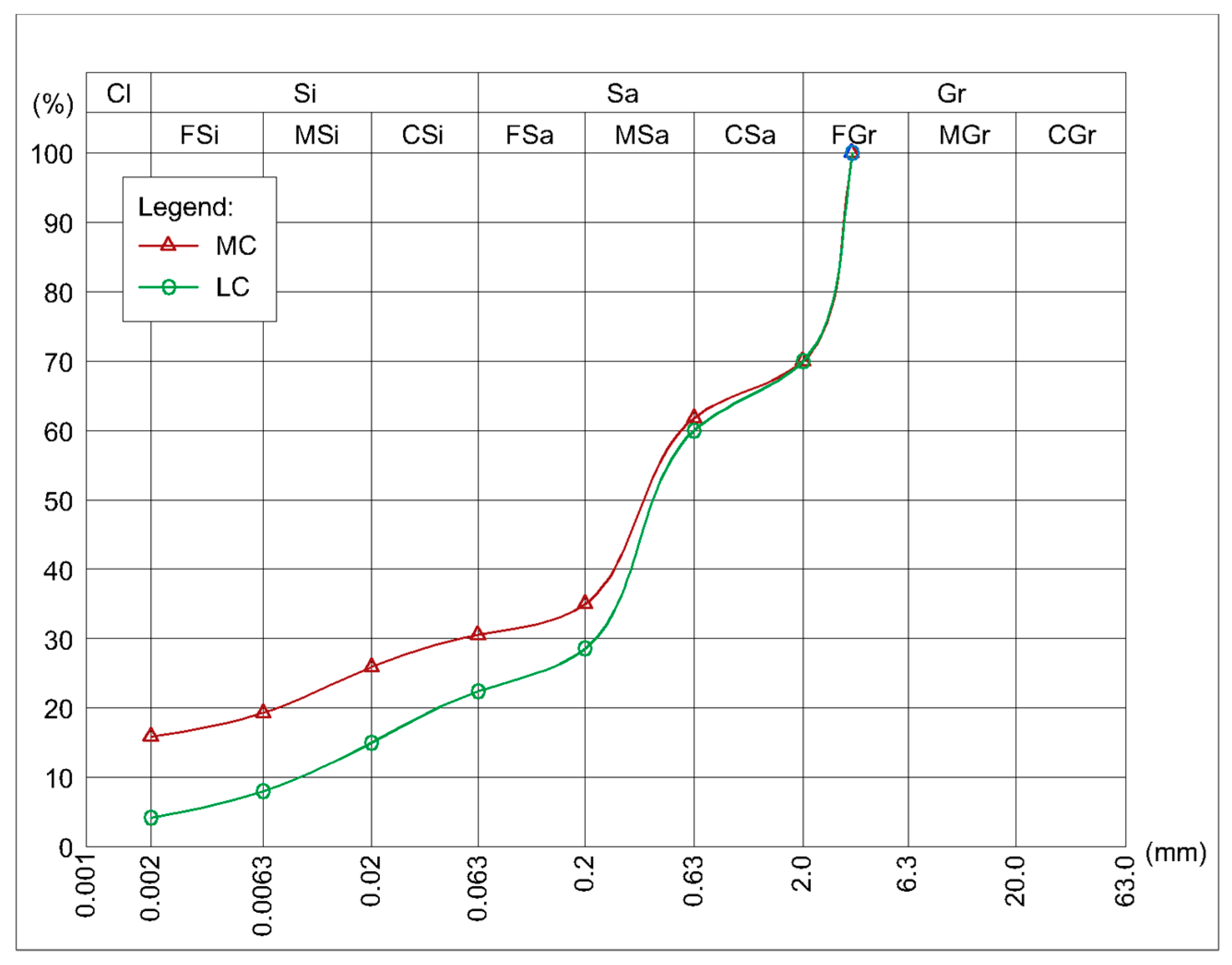
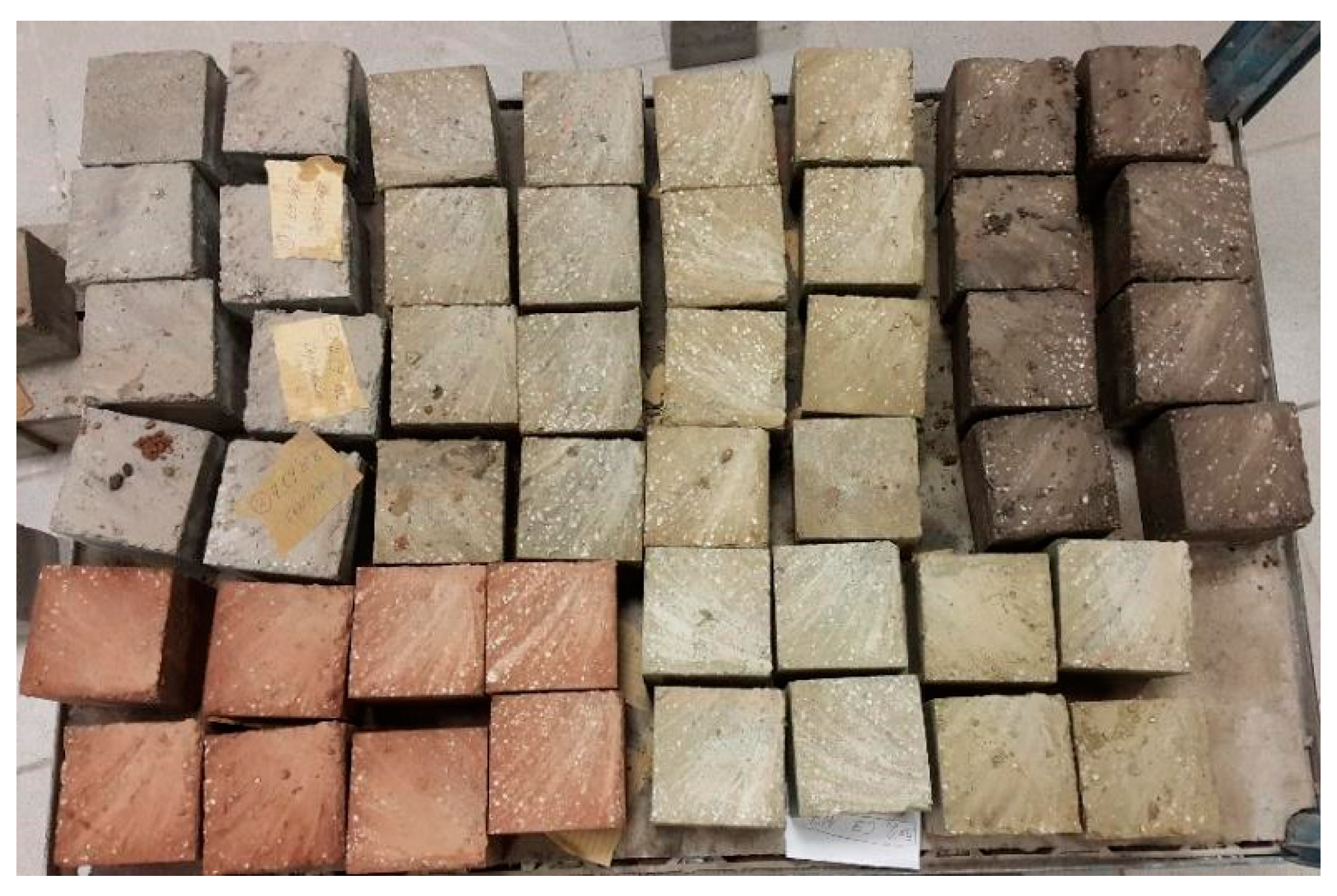


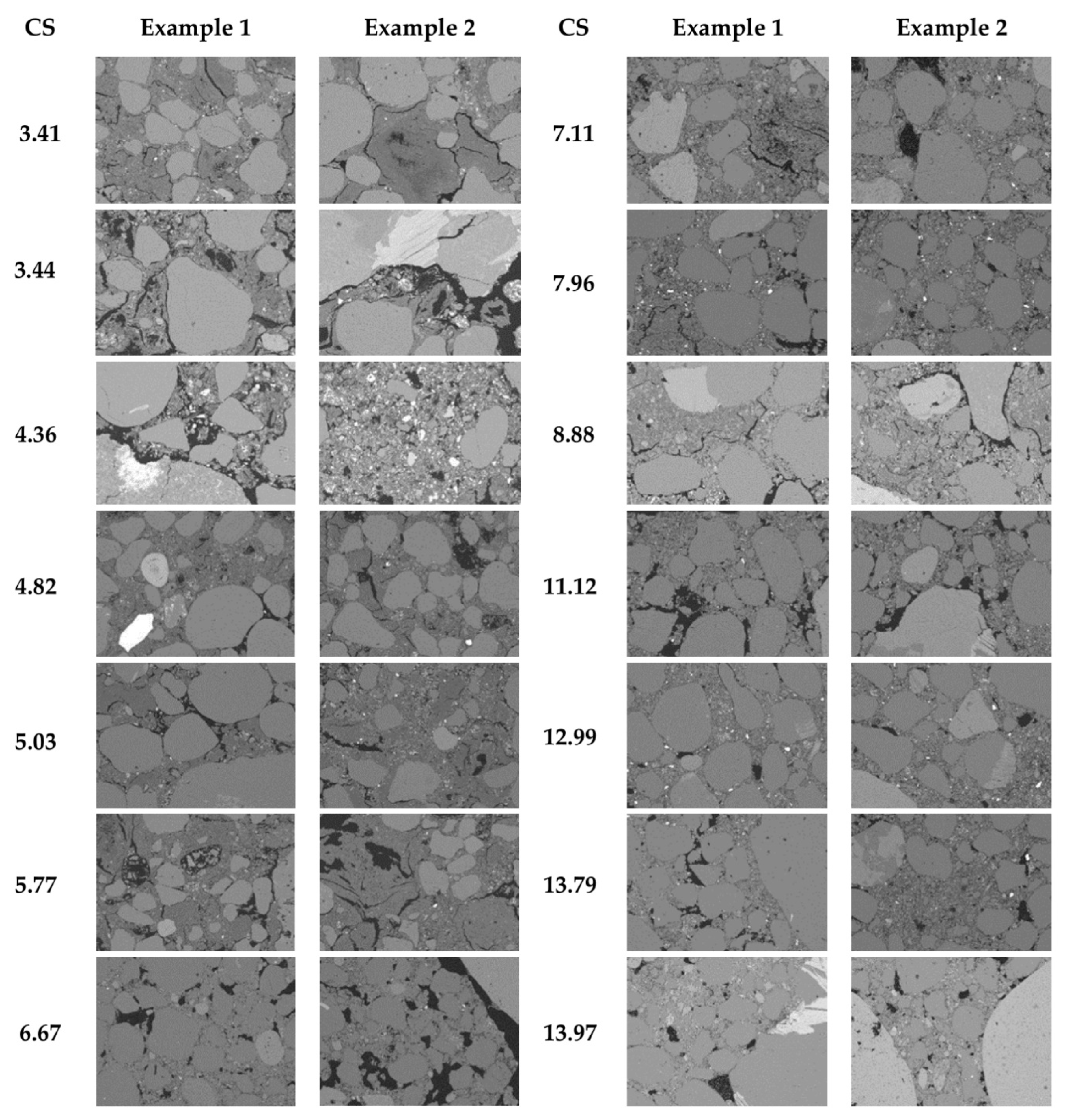

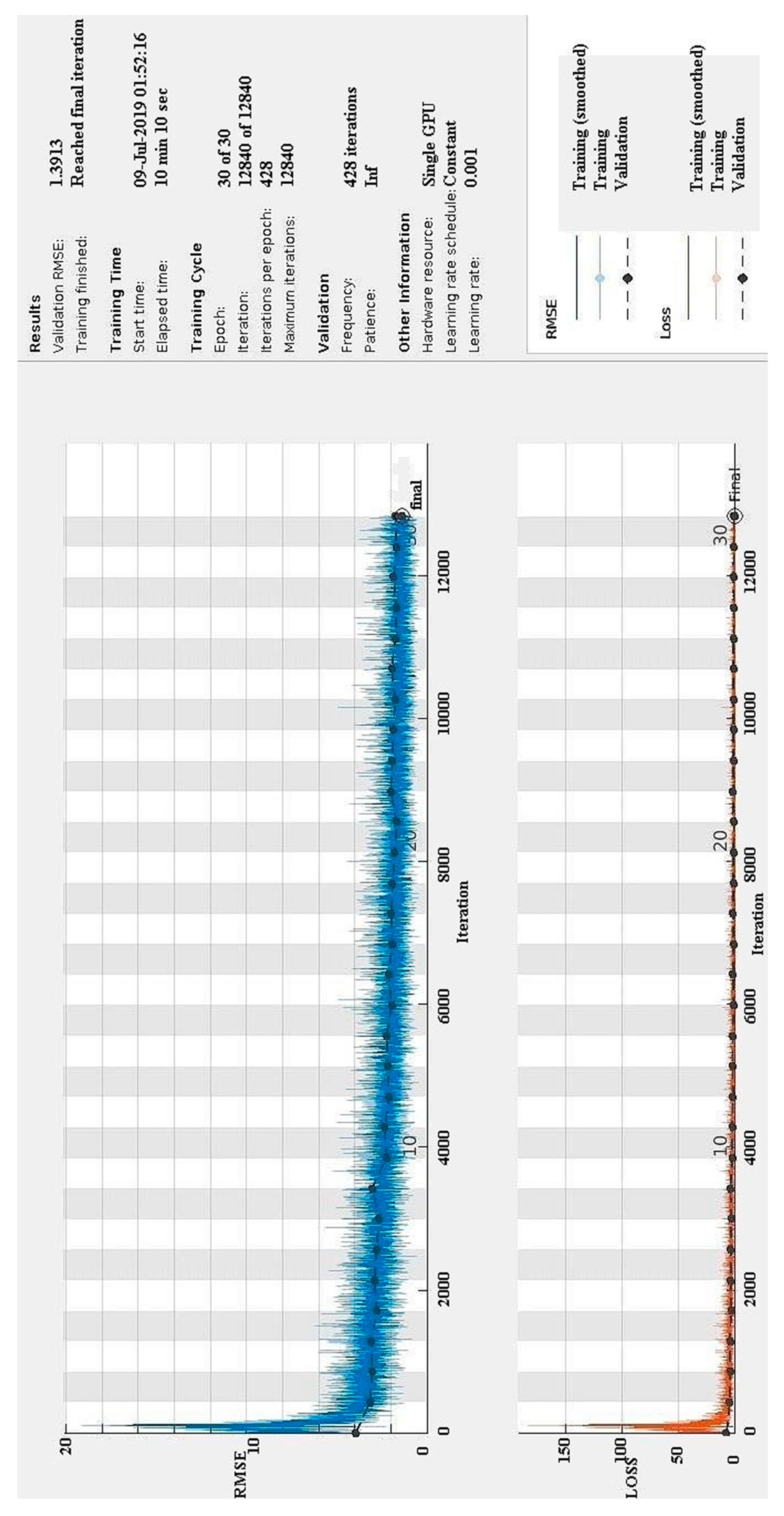
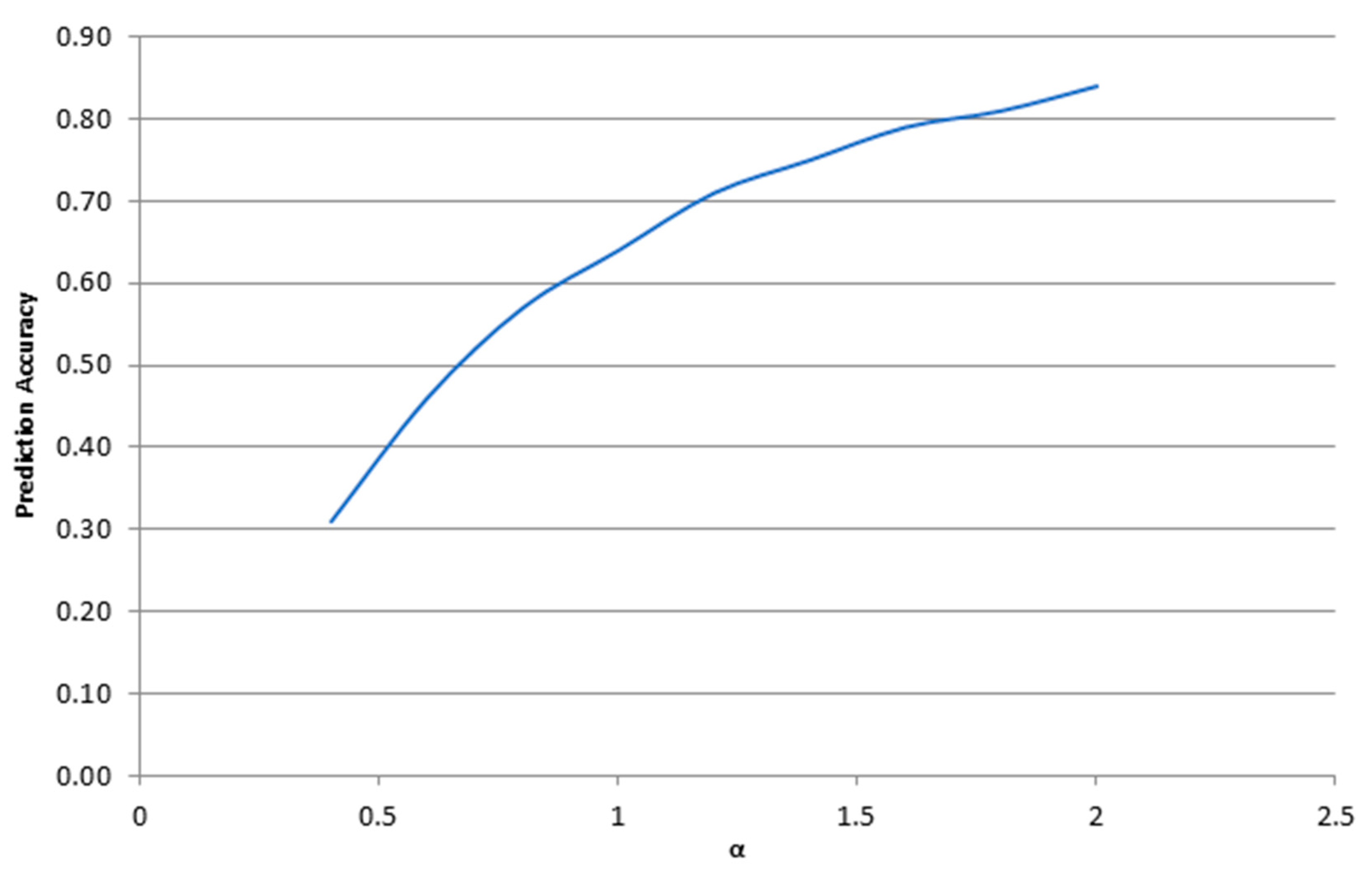
| Mixture symbol | Montmorillonite (%) | Beidellite (%) | Kaolinite (%) | Illite (%) | Goethite (%) | Siderite (%) | Calcite (%) | Organic substance (%) | Quartz and others (%) | Cement addition (%) | OMC (%) |
|---|---|---|---|---|---|---|---|---|---|---|---|
| LC II 6% | 0.0 | 2.6 | 0.4 | 0.8 | 0.3 | 0.0 | 6.8 | 0.2 | 88.9 | 6 | 7 |
| LC II 9% | 9 | ||||||||||
| LC VII 6% | 0.0 | 2.3 | 1.2 | 0.0 | 0.8 | 0.7 | 0.0 | 0.3 | 94.6 | 6 | 7 |
| LC VII 9% | 9 | ||||||||||
| LC XI 6% | 0.0 | 1.8 | 0.4 | 2.7 | 0.0 | 0.5 | 0.0 | 0.0 | 94.6 | 6 | 7 |
| LC XI 9% | 9 | ||||||||||
| MC III 6% | 0.0 | 6.6 | 1.9 | 0.0 | 0.9 | 0.0 | 13.1 | 0.1 | 77.3 | 6 | 8 |
| MC III 9% | 9 | ||||||||||
| MC IV 6% | 0.0 | 0.0 | 21.8 | 0.0 | 0.3 | 0.0 | 0.0 | 0.1 | 77.8 | 6 | 8 |
| MC IV 9% | 9 | ||||||||||
| MC V 6% | 0.0 | 0.0 | 21.1 | 0.0 | 0.0 | 0.0 | 0.0 | 0.1 | 78.7 | 6 | 8 |
| MC V 9% | 9 | ||||||||||
| MC X 6% | 3.0 | 4.1 | 6.9 | 2.9 | 0.0 | 1.1 | 0.0 | 0.4 | 81.7 | 6 | 8 |
| MC X 9% | 9 |
| α | Prediction Accuracy |
|---|---|
| 0.4 | 0.31 |
| 0.6 | 0.46 |
| 0.8 | 0.57 |
| 1 | 0.64 |
| 1.2 | 0.71 |
| 1.4 | 0.75 |
| 1.6 | 0.79 |
| 1.8 | 0.81 |
| 2 | 0.84 |
| Fold No. | Covariance | Correlation Coefficient |
|---|---|---|
| Fold 1 | 8.742 | 0.857 |
| Fold 2 | 10.08 | 0.897 |
| Fold 3 | 9.588 | 0.914 |
| Fold 4 | 9.827 | 0.915 |
| Fold 5 | 9.385 | 0.853 |
| Fold 6 | 10.21 | 0.934 |
| Fold 7 | 9.411 | 0.910 |
| Fold 8 | 8.654 | 0.896 |
| Fold 9 | 8.622 | 0.890 |
| Fold 10 | 9.353 | 0.914 |
| Average | 9.39 | 0.898 |
| Method | No. of Features | RMSE (MPa) |
|---|---|---|
| DCNN | 4096 | 1.5 |
| Random forest with PCA on the deep features | 572 | 3.1185 |
| Linear regression with PCA on the deep features | 572 | 2.5057 |
| Method | No. of Features | RMSE (MPa) | |
|---|---|---|---|
| Random Forest | Linear Regression | ||
| HOG | 72 | 3.2192 | 3.2217 |
| LBP | 10 | 2.4807 | 2.8518 |
| SIFT | 100 | 3.0682 | 4.6951 |
© 2019 by the authors. Licensee MDPI, Basel, Switzerland. This article is an open access article distributed under the terms and conditions of the Creative Commons Attribution (CC BY) license (http://creativecommons.org/licenses/by/4.0/).
Share and Cite
Narloch, P.; Hassanat, A.; Tarawneh, A.S.; Anysz, H.; Kotowski, J.; Almohammadi, K. Predicting Compressive Strength of Cement-Stabilized Rammed Earth Based on SEM Images Using Computer Vision and Deep Learning. Appl. Sci. 2019, 9, 5131. https://doi.org/10.3390/app9235131
Narloch P, Hassanat A, Tarawneh AS, Anysz H, Kotowski J, Almohammadi K. Predicting Compressive Strength of Cement-Stabilized Rammed Earth Based on SEM Images Using Computer Vision and Deep Learning. Applied Sciences. 2019; 9(23):5131. https://doi.org/10.3390/app9235131
Chicago/Turabian StyleNarloch, Piotr, Ahmad Hassanat, Ahmad S. Tarawneh, Hubert Anysz, Jakub Kotowski, and Khalid Almohammadi. 2019. "Predicting Compressive Strength of Cement-Stabilized Rammed Earth Based on SEM Images Using Computer Vision and Deep Learning" Applied Sciences 9, no. 23: 5131. https://doi.org/10.3390/app9235131
APA StyleNarloch, P., Hassanat, A., Tarawneh, A. S., Anysz, H., Kotowski, J., & Almohammadi, K. (2019). Predicting Compressive Strength of Cement-Stabilized Rammed Earth Based on SEM Images Using Computer Vision and Deep Learning. Applied Sciences, 9(23), 5131. https://doi.org/10.3390/app9235131










